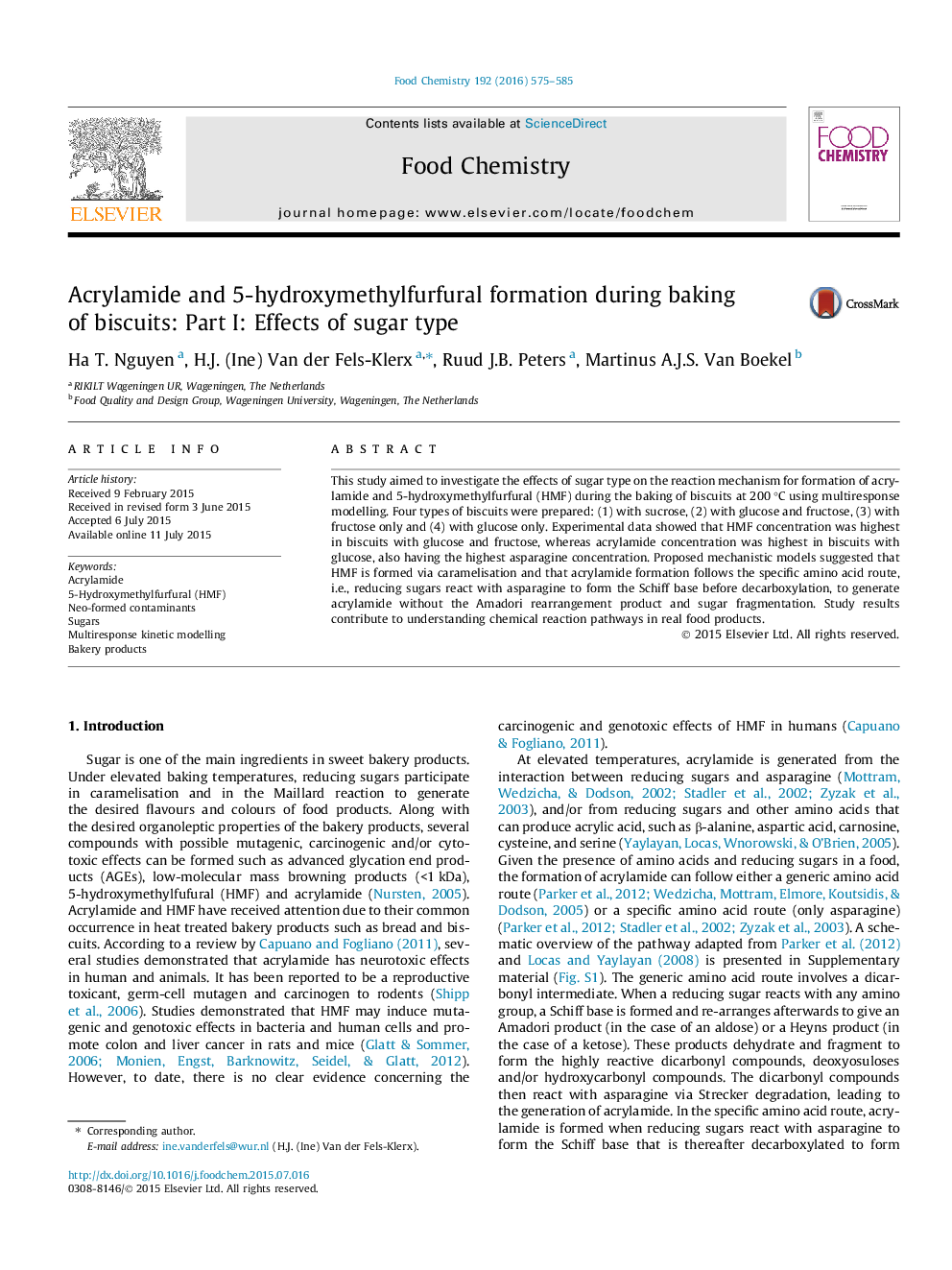| Article ID | Journal | Published Year | Pages | File Type |
|---|---|---|---|---|
| 7590039 | Food Chemistry | 2016 | 11 Pages |
Abstract
This study aimed to investigate the effects of sugar type on the reaction mechanism for formation of acrylamide and 5-hydroxymethylfurfural (HMF) during the baking of biscuits at 200 °C using multiresponse modelling. Four types of biscuits were prepared: (1) with sucrose, (2) with glucose and fructose, (3) with fructose only and (4) with glucose only. Experimental data showed that HMF concentration was highest in biscuits with glucose and fructose, whereas acrylamide concentration was highest in biscuits with glucose, also having the highest asparagine concentration. Proposed mechanistic models suggested that HMF is formed via caramelisation and that acrylamide formation follows the specific amino acid route, i.e., reducing sugars react with asparagine to form the Schiff base before decarboxylation, to generate acrylamide without the Amadori rearrangement product and sugar fragmentation. Study results contribute to understanding chemical reaction pathways in real food products.
Related Topics
Physical Sciences and Engineering
Chemistry
Analytical Chemistry
Authors
Ha T. Nguyen, H.J. (Ine) Van der Fels-Klerx, Ruud J.B. Peters, Martinus A.J.S. Van Boekel,
